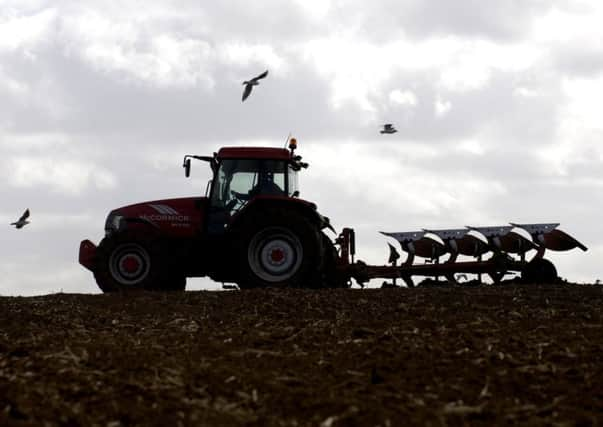Farm safety week focuses on role of faulty vehicles
This article contains affiliate links. We may earn a small commission on items purchased through this article, but that does not affect our editorial judgement.


With farmers coming into contact with a host of machinery on a daily basis, the organisers of the safety week said that tractors, quad bikes, combines, choppers and balers as well as the host of other farm machines all brought their own attendant dangers, with vehicle and machinery related accidents accounting for almost 40 per cent of farm deaths.
• READ MORE: Farming news
“Hands, hair and clothing can be caught by unguarded PTO shafts or other unguarded moving parts such as pulleys and belts. People can be injured by front-end loaders, falling from a moving tractor or being struck by its wheels,” according to Martin Malone from Farm Safety Partnership Scotland.
Advertisement
Hide AdAdvertisement
Hide AdAnd the Health & Safety Executive figures released earlier this week revealed that the most common cause of fatality on farms continued to involve vehicles overturning or people being struck by a vehicle.
However, North-east farmer Peter Robertson has instigated a simple measure which, if more widely adopted, could help reduce the number of people struck by farm vehicles in the workplace.
“I decided that to put in place a hi-vis policy, where anyone – no matter their age or purpose – who comes onto the farm must wear a hi-vis jacket or hi-vis boiler suit,” Robertson said.
“We’ve invested in those for our employees and family, and when we have schoolchildren on the farm we ensure every single one of them wears one.”
He said that not only were the vests widely available, but they were also cheap: “This policy is widespread in nearly every other manual labour industry, such as the buildings and construction sector, so why should agriculture be any different?”
• Although not aimed purely at safety, the announcement of a major investment in research into driverless tractors could help improve both this area and the industry’s future productivity.
Advertisement
Hide AdAdvertisement
Hide AdThe UK government this week announced that £25 million worth of funding would be aimed at developing “connected autonomous vehicles” for use on farms and other industries through a research and development competition that will run alongside a £246m project aimed at improving battery technology.
Investments in the new project announced by business secretary Greg Clark have been earmarked for cutting-edge projects that will encourage the commercial potential of off-road driverless technology.